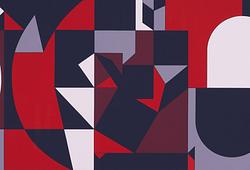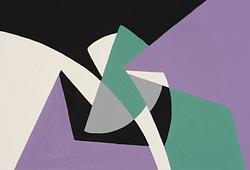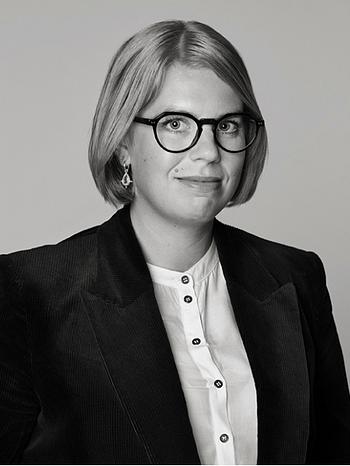Isaac Grünewald
"Anna"
Signed Isaac. Executed in 1917-18. Canvas 130 x 84 cm.
Provenance
Stockholms Auktionsverk, "Moderna", 25 - 26 April 2012, cat. no 850.
Private Collection.
Exhibitions
Liljevalchs konsthall, Stockholm, "The Expressionist Exhibition", May 1918, cat. no 100.
Liljevalchs konsthall, Stockholm, "The Singing Tree", 8 September - 5 November 1989, cat. no 63.
Norrköping Art Museum, "The Singing Tree", 19 November 1989 - 28 January 1990, cat. no 63.
Borås Art Museum, "The Singing Tree", 11 February - 8 April 1990, cat. no 63.
Liljevalchs konsthall, Stockholm, "Sigrid Hjertén", 17 March - 28 May 1995.
Literature
Per I. Gedin, "Isaac Grünewald - Modernist and Human", 2015, mentioned and illustrated full page 238.
More information
When World War I broke out in 1915, the Grünewald–Hjertén family returned to Sweden from Paris. They brought with them influence and knowledge of Fauvism and Expressionism – that the couple had acquired from L´académie Matisse in Paris and the German Expressionists they had met in Berlin. The year 1917 marked Isaac Grünewald's real breakthrough, with solo exhibitions in Stockholm, Copenhagen and Bergen. The portrait of the artist's sister Anna Grünewald (1890–1977) was painted during this important period, which was both extremely productive and turbulent for the artist. It is an empathetic and personal portrait, characterised by ‘simplicity, grandeur, expressiveness and clarity’ – the watchwords of the new art according to Isaac Grünewald.
The portrait of Anna was shown at the important Expressionist exhibition in 1918 at Liljevalchs konsthall in Stockholm. The exhibition became a significant manifestation of modernism and expressionism, but also for the artists Leander Engström, Isaac Grünewald and Sigrid Hjertén. The Grünewald and Engström families had been friends for a long time, exhibiting together and following each other's work since their time at the Matisse Academy in Paris.
The exhibition rooms at Liljevalchs were filled with densely hung paintings, overflowing with bold colours in unexpected combinations. The three young artists, who were portrayed by art critics as radicals and Bolsheviks, wanted to break away from naturalistic painting and find their own expression. At the same time, they fought for the right to express themselves on their own terms.
In the same year, 1918, Isaac Grünewald gave a lecture at the Aesthetic Association in Uppsala, ‘The New Renaissance in Art,’ in which he outlined his own principles and those of expressionism, emphasising, among other things, the importance of light:
"The bright, strong electric lighting that has abolished night in the big city has given us previously unimagined light phenomena. The nervous restlessness that characterises modern man has inevitably also left its mark on modern art. In the good old days, artists had more time to immerse themselves in details. But now, when artists receive a thousand times more impressions than artists did in the past, their means of expression must also change."
In his text in Liljevalch's 2008 catalogue, Anders Wahlgren explains how this period was marked by the Russian Revolution of 1917, and that it was not unusual in cultural circles to equate art with politics. Criticism of the three expressionists was not long in coming, but despite the storm of criticism, a curious audience flocked to see their work – and modernism's breakthrough in Sweden was a fact. Engström, Grünewald and Hjertén continued to paint in their personal and radical style and reached an ever-growing audience.
Portrait painting was a central part of Grünewald's ouevre. His models were often people close to him – artists, actors and, above all, his wife Sigrid Hjertén. In the portrait in this auction, he has depicted his younger sister Anna in strong colours, with bold brushstrokes and an emotional intensity that broke with the more traditional ideals of the time.
Anna Grünewald was an aspiring opera singer at the Royal Opera and a strong, self-aware woman. Grünewald has portrayed her sister in a vivid presentation where she proudly poses in evening dress, with a white fox boa and a fan in her hand. She appears as controversially modernist in her posture as Isaac is in his painting. The fur stole glows white in the strong electric light that blurs the shadows on her face. From beneath her dramatic black bangs, she gazes steadily at something outside the frame of the picture. The bold rose-red colour of her dress is echoed in the embroidered drapery that falls theatrically behind her. The motif becomes a stage set where the warm and cool colours take centre stage. The warm areas of red and pink evoke cold blue-green shadows, and this ‘optical problem’ occupies the artist in the painting. It is an empathetic portrait that reflects Anna's strength, expressive elegance and clear view of contemporary life and time.
Two years later, on her way to a concert at Tivoli in Copenhagen, Anna met her future husband and moved to Malmö in Southern Sweden. Anna Grünewald-Goldman became an important part of the city's Jewish community. During the war years, she was actively involved in refugee aid and was awarded the Danish King Christian X's Medal of Freedom for her efforts.
Photo: "Anna", exhibition view Expressionistutställningen 1918, Liljevalchs, Stockholm.
Photo: The siblings Isaac, Anna and Gabriel. Photographer unknown.






































































